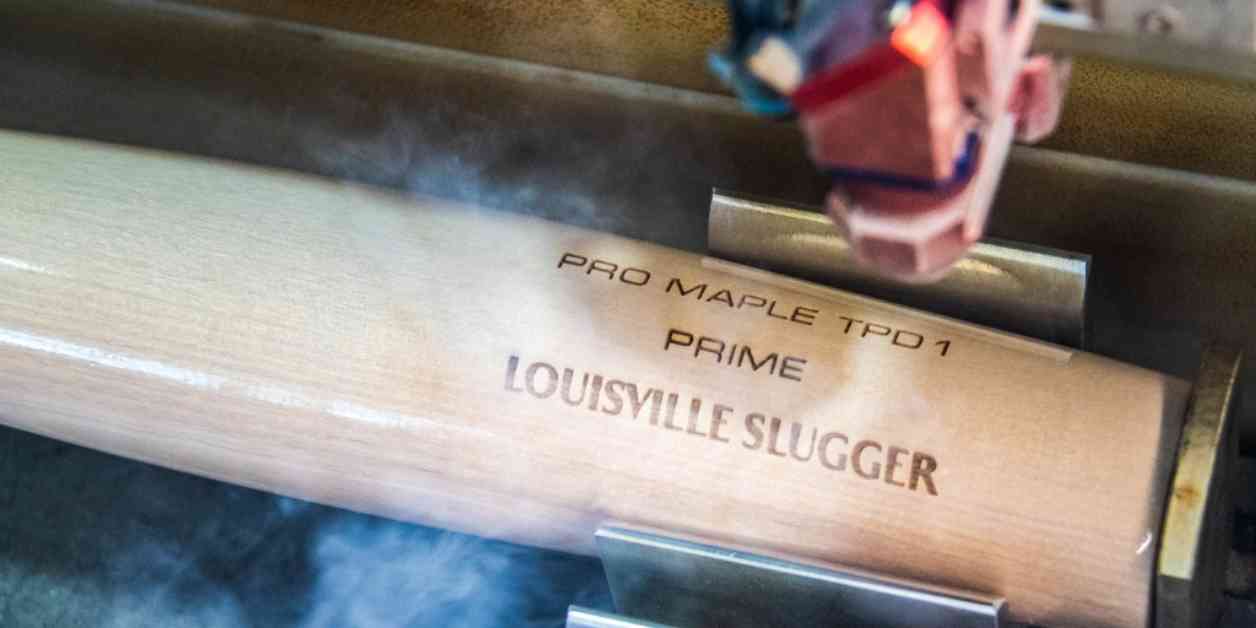When the crack of the bat echoed across ballparks last week, few could have predicted the magnetic pull of a new baseball bat design that would captivate players, fans, and manufacturers alike. The baseball world was abuzz with the sudden surge in demand for what has now been dubbed the “torpedo bat,” a revolutionary innovation that promised to redefine the game.
It all started four years ago, with physicists collaborating with Louisville Slugger to enhance batted ball velocity. This collaboration birthed a distinctive bat shape, reminiscent of a bowling pin, featuring a thicker middle and a tapered barrel. Although the torpedo bat made its debut in November 2023, initial adoption among Major League Baseball (MLB) players was tepid at best. But that all changed dramatically when the torpedo bats took center stage last weekend, sparking a frenzy that catapulted them into the limelight.
The meteoric rise of the torpedo bat was propelled by the New York Yankees smashing an MLB record with 15 home runs in just three games, with five players wielding the new bats. The design shift, moving the “sweet spot” closer to the point of contact, proved to be a game-changer, with some bats boasting a shift of up to 6 inches. The bat’s sudden explosion into the public consciousness was catalyzed by Yankees broadcaster Michael Kay, whose viral clip detailing the bat’s origin story set the internet abuzz.
The ripple effect of this newfound fascination with the torpedo bat was felt across the MLB landscape, prompting a flurry of inquiries and orders from teams and players. Cincinnati Reds, among the first to jump on the bandwagon, hastily summoned Louisville Slugger executives to deliver samples for immediate testing. The feedback was overwhelmingly positive, with star players like Elly De La Cruz giving the torpedo bat a resounding seal of approval with a standout performance on the field.
As demand for torpedo bats skyrocketed, manufacturers scrambled to meet the surging requests. Louisville Slugger, renowned for its birch wood bats, faced the logistical challenge of sourcing ample raw materials to keep pace with the escalating demand. On the other hand, Marucci, with its maple wood expertise, navigated smoothly due to owning timber companies and mills. The race was on to cater to MLB players’ bespoke bat preferences while gearing up for the deluge of public interest anticipated.
The torpedo bat phenomenon underscored a seismic shift in baseball’s landscape, generating a wave of excitement that transcended the sport’s traditional confines. Louisville Slugger, no stranger to sales spikes, likened the torpedo bat craze to its previous hits like the Mother’s Day pink bats and souvenir bat frenzy during the Chicago Cubs’ historic World Series win. Yet, the torpedo bat’s disruptive potential far exceeded mere novelty, heralding an era of innovation in a game steeped in tradition.
The evolution of baseball equipment mirrored the increasing reliance on data and technology to gain a competitive edge. With pitchers leveraging advanced analytics to boost their performance, hitters were quick to adapt by revolutionizing their swing mechanics. The torpedo bat epitomized this paradigm shift, offering a fresh perspective on how bat design could optimize hitting opportunities. Marucci and Louisville Slugger’s cutting-edge hitting labs played a pivotal role in fine-tuning the torpedo bat to perfection.
While skeptics like Milwaukee manager Pat Murphy dismissed the bat’s efficacy, proponents like former physicist Aaron Leanhardt championed the design’s merit. The revelation that elite players like Francisco Lindor and Giancarlo Stanton had already embraced the torpedo bat underscored its potential to reshape the game. The delayed fanfare surrounding the bat’s unveiling only heightened its mystique, culminating in a perfect storm of innovation and intrigue that swept across the baseball universe.
In the wake of the torpedo bat frenzy, the baseball world found itself at a crossroads, poised on the brink of a new era defined by innovation and ingenuity. As players, manufacturers, and fans alike marveled at the transformative power of a simple bat design, one thing became abundantly clear: the magic of the game lay not just in the players’ hands but in the tools that empowered them to reach new heights.
Andrew Greif, a seasoned sports journalist, beautifully encapsulated the essence of this transformative moment, underscoring the profound impact of the torpedo bat on the fabric of baseball. With each swing of the bat, a new chapter in the game’s storied history was being written, heralding a future where innovation and tradition converged to create something truly extraordinary.














